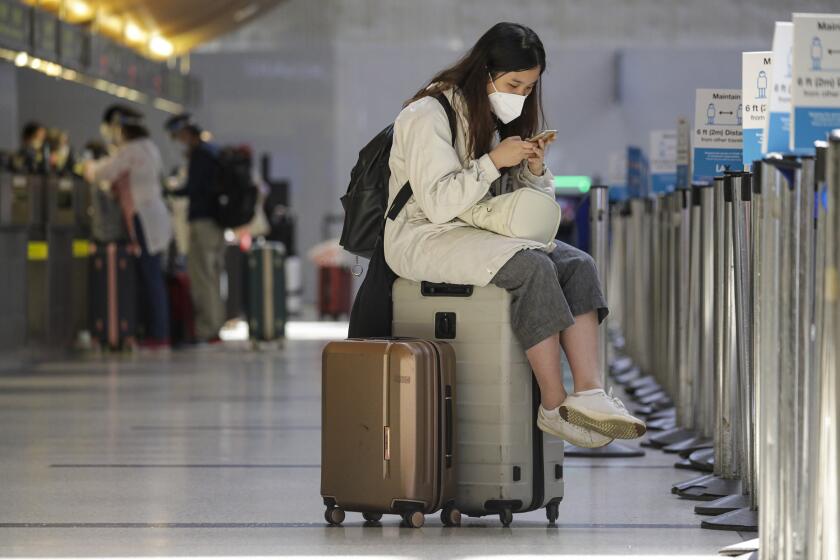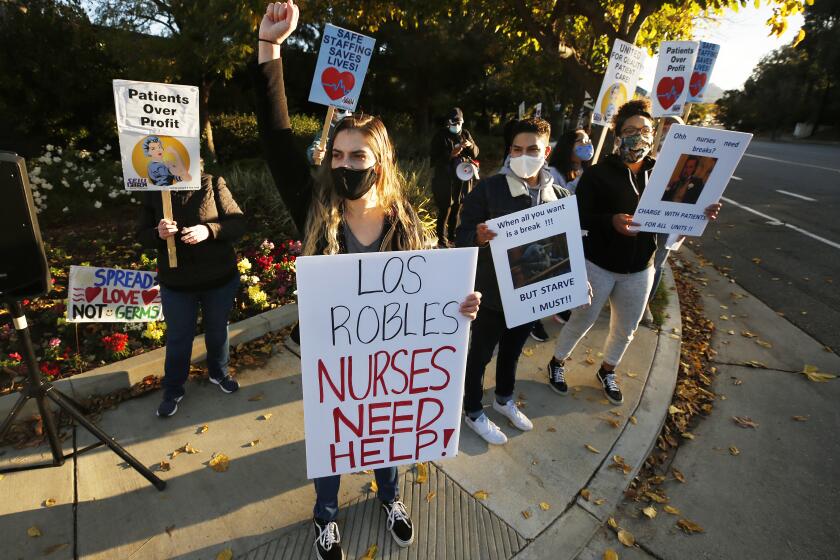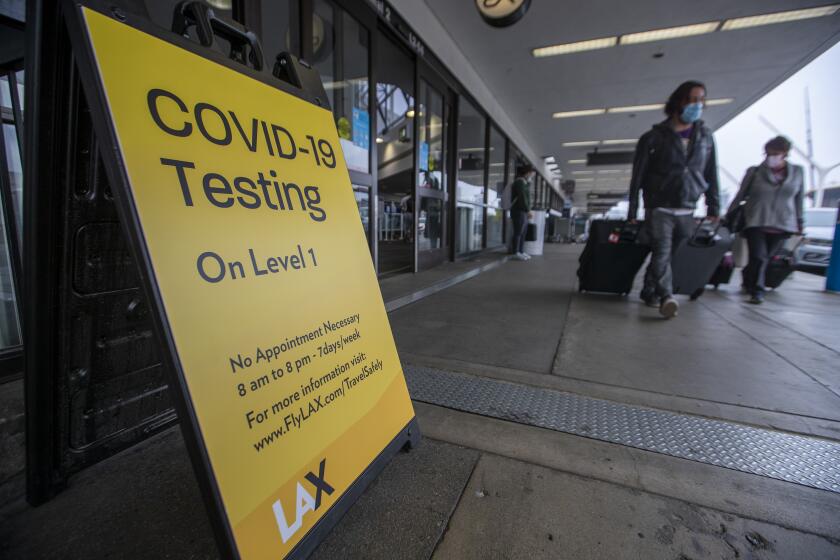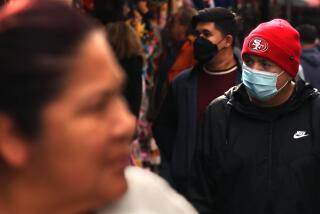California’s COVID-19 surge: ‘It’s brutal. It’s astoundingly bad’ and about to get worse

- Share via
Los Angeles County Public Health Director Barbara Ferrer was blunt about the region’s coronavirus conditions, calling this time — nearly nine months in — “the most difficult moment in the pandemic.”
Both cases and hospitalizations have hit unprecedented levels. And officials fully expect conditions to deteriorate rapidly in the coming weeks, following Thanksgiving gatherings and other holiday-related events.
“The increases we’re seeing now are not sustainable,” Ferrer said. “They’re not sustainable, because they’re gonna overwhelm not just our healthcare system, but the entire state’s healthcare system.”
Such predictions have been echoed by state officials and public health experts.
Here’s a look at what could be ahead in the coming weeks as COVID-19 infections continue to surge.
Los Angeles County has issued a new COVID-19 pandemic order in a desperate move aimed at slowing an unprecedented surge of coronavirus infections.
Where are we at with hospitalizations?
The county has surpassed its previous all-time high of 2,232 hospitalizations set on July 18. On Sunday, the county recorded 2,316 people in its hospitals with confirmed coronavirus infection, according to data released Monday. The rate of increasing hospitalizations in L.A. County has been breathtaking, tripling from 777 on Halloween.
California as a whole has also seen record hospitalizations.
Of particular concern is intensive care unit capacity. Currently, about 75% of the state’s 7,733 ICU beds are occupied — with 1,812 of them filled by COVID-19 patients.
There were 7,787 coronavirus patients hospitalized statewide as of Sunday, according to the latest available data. That’s the highest number recorded during the pandemic — the second consecutive day the record for COVID-19 hospitalizations has been broken. That’s a near-tripling of hospitalizations since Nov. 2, when 2,602 people were in the hospital with coronavirus infection.
COVID-19 cases requiring intensive care have tripled since Oct. 14, when 600 people were in ICU beds. On Sunday, 1,812 ICU cases were reported.
The weekly testing guidelines are some of the strongest in the nation, according to industry groups that lobbied for the change.
What are the forecasts?
The latest figures largely don’t include the most recent deluge of infections — as COVID-19 hospitalizations reflect cases that were identified two to three weeks earlier, according to Dr. Mark Ghaly, California’s Health and Human Services secretary.
Gov. Gavin Newsom said Monday the state could exhaust its existing ICU capacity by mid-December.
The rural counties of Northern California could exceed ICU capacity by early December, Southern California and the San Joaquin Valley by mid-December, the Sacramento area by late December, and the Bay Area by early January.
“If these trends continue, we’re going to have to take much more dramatic — arguably drastic — actions,” Newsom said during a briefing.
Newsom said about 59% of California’s hospital beds were currently occupied by patients needing care for all sorts of reasons — but that could rise to 78% by Christmas Eve.
He emphasized that the alarming numbers would come to pass if “we just sit back and we are bystanders at this moment and we don’t subsequently improve upon our existing efforts.”
What are experts saying?
Hospitals are better equipped to handle a COVID surge than they were in the spring. Medical care has improved, and there is a great capacity to open additional facilities if needs arise. Still, with infections rising across the state, it could be harder for hard-hit counties to lean on other areas to take patients.
Experts say that, with advancements in medical treatments and knowledge of the disease gained over the last nine months, they are hopeful that a smaller proportion of people who are infected with the virus will die during this wave compared with lives lost during the spring or summer.
But those improvements could be jeopardized by overcrowding at hospitals, as medical staff is stretched thin and unable to provide the healthcare desperately needed to save the lives of the sickest patients, experts told the Los Angeles Times.
Overall, public health professionals say this marks a dangerous moment.
“It’s brutal. It’s astoundingly bad. ... They’re seriously, seriously bad numbers,” said Dr. George Rutherford, an epidemiologist and infectious diseases control expert at UC San Francisco. “We don’t have anyplace to decompress patients because stuff that’s just as bad is going on in Oregon and Nevada and Arizona.
“We are here on our own, and this is a natural disaster. And we need to be able to avoid the worst parts of this as much as possible. And if there were ever a time for prevention and heeding advice, this is it.”
A projection cited by Los Angeles Mayor Eric Garcetti has 4,000 more L.A. County residents dying of COVID-19 by the year’s end. But experts say that dire outcome is avoidable.
What can be done?
Los Angeles County has imposed controversial restrictions, including suspending outdoor restaurant dining, banning gatherings and closing playgrounds. Officials hope these actions can slow the infection rate.
Newsom on Monday raised “the potential for a stay-at-home order” for areas in the strictest, or purple, tier of California’s coronavirus reopening road map.
“We will be coming out with some additional information,” Newsom said, “some additional recommendations in the very, very near future.”
Ferrer added: “We don’t really have any choice but to use all the tools at hand to stop the surge. Until there is a vaccine, each of us needs to protect all of those around us — both those we know and those we don’t.
“The virus is running rampant through almost every part of our county.”
More to Read
Sign up for Essential California
The most important California stories and recommendations in your inbox every morning.
You may occasionally receive promotional content from the Los Angeles Times.















